James Speight0071432205, 9780071432207
Contents: Organic Compounds * General Information, Conversion Tables, and Mathematics * Inorganic Compounds * Properties of Atom, Radicals, and Bonds * Physical Properties * Thermodynamic Properties * Spectroscopy * Electrolytes, Electromotive Force and Chemicals * Physicochemical Relationships * Polymers, Rubbers,Fats, Oils, and Waxes * Practical Laboratory Information (20050601)
Table of contents :
Front Matter……Page 1
Table of Contents……Page 0
About the Editor……Page 3
Preface to the Sixteenth Edition……Page 4
Preface to the Fifteenth Edition……Page 5
Preface to the First Edition……Page 7
Table of Contents……Page 9
32205_01a.pdf……Page 10
Section 1. Inorganic Chemistry……Page 11
1.1 Nomenclature of Inorganic Compounds……Page 13
1.1.1 Writing Formulas……Page 14
1.1.2 Naming Compounds……Page 15
1.1.4 Anions……Page 18
1.1.5 Acids……Page 19
Table 1.1 Trivial Names for Acids……Page 20
1.1.7 Coordination Compounds……Page 21
Table 1.2 Synonyms and Mineral Names……Page 23
1.2.3 Boiling Point……Page 26
1.2.4 Refractive Index……Page 27
Table 1.3 Physical Constants of Inorganic Compounds……Page 28
32205_01b.pdf……Page 59
Table 1.4 Color, Crystal Symmetry and Refractive Index of Inorganic Compounds……Page 74
Table 1.5 Refractive Index of Minerals……Page 96
Table 1.6 Properties of Molten Salts……Page 98
Table 1.7 Triple Points of Various Materials……Page 100
Table 1.8 Density of Mercury and Water……Page 101
Table 1.9 Specific Gravity of Air at Various Temperatures……Page 102
Table 1.10 Boiling Points of Water……Page 103
Table 1.11 Boiling Points of Water……Page 104
Table 1.13 Compressibility of Water……Page 105
Table 1.15 Subdivision of Main Energy Levels……Page 106
Table 1.16 Chemical Symbols, Atomic Numbers, and Electron Arrangements of the Elements……Page 107
Table 1.17 Atomic Numbers, Periods, and Groups of the Elements (The Periodic Table)……Page 131
Table 1.18 Atomic Weights of the Elements……Page 132
Table 1.19 Physical Properties of the Elements……Page 134
Table 1.20 Conductivity and Resistivity of the Elements……Page 138
Table 1.22 Relative Abundances of Naturally Occurring Isotopes……Page 142
Table 1.23 Radioactivity of the Elements (Neptunium Series)……Page 145
Table 1.24 Radioactivity of the Elements (Thorium Series)……Page 146
Table 1.26 Radioactivity of the Elements (Uranium Series)……Page 147
Table 1.27 lonization Energy of the Elements……Page 148
Table 1.28 lonization Energy of Molecular and Radical Species……Page 151
Table 1.29 Electronegativity Values of the Elements……Page 155
Table 1.30 Electron Affinities of Elements, Molecules, and Radicals……Page 156
32205_01c.pdf……Page 158
1.7 Bond Lengths and Strengths……Page 160
Table 1.31 Atom Radii and Effective Ionic Radii of Elements……Page 161
Table 1.32 Approximate Effective Ionic Radii in Aqueous Solutions at 25°C……Page 167
Table 1.34 Octahedral Covalent Radii for CN = 6……Page 168
Table 1.35 Bond Lengths between Elements……Page 169
Table 1.36 Bond Dissociation Energies……Page 170
Table 1.37 Bond Dipole Moments……Page 181
1.8.1 Dielectric Constant……Page 182
Table 1.39 Dipole Moments and Dielectric Constants……Page 183
1.9 Molecular Geometry……Page 184
Table 1.40 Spatial Orientation of Common Hybrid Bonds……Page 185
Table 1.41 Crystal Lattice Types……Page 186
Table 1.43 Table of Nuclides……Page 187
1.11.1 Vapor Pressure Equations……Page 209
Table 1.44 Vapor Pressures of Selected Elements at Different Temperatures……Page 211
Table 1.45 Vapor Pressures of Inorganic Compounds up to 1 Atmosphere……Page 213
Table 1.46 Vapor Pressures of Various Inorganic Compounds……Page 222
Table 1.47 Vapor Pressure of Mercury……Page 230
Table 1.48 Vapor Pressure of Ice in Millimeters of Mercury……Page 232
Table 1.49 Vapor Pressure of Liquid Ammonia, NH_3……Page 233
Table 1.50 Vapor Pressure of Water……Page 234
Table 1.51 Vapor Pressure of Deuterium Oxide……Page 235
Table 1.52 Viscosity and Surface Tension of Inorganic Substances……Page 236
1.13 Thermal Conductivity……Page 240
Table 1.53 Thermal Conductivity of the Elements……Page 241
Table 1.54 Thermal Conductivity of Various Solids……Page 242
1.14.2 Critical Pressure……Page 243
Table 1.55 Critical Properties……Page 244
Table 1.56 Enthalpies and Gibbs Energies of Formation, Entropies, and Heat Capacities of the Elements and Inorganic Compounds……Page 247
Table 1.57 Heats of Fusion, Vaporization, and Sublimation and Specific Heat at Various Temperatures of the Elements and Inorganic Compounds……Page 290
1.16 Activity Coefficients……Page 309
Table 1.59 Constants of the Debye-Hückel Equation from 0 to 100°C……Page 310
1.17.1 Standards for pH Measurement of Blood and Biological Media……Page 311
Table 1.61 National Bureau of Standards (U.S.) Reference pH Buffer Solutions……Page 313
Table 1.63 Composition and pH Values of Buffer Solutions 8.107……Page 314
Table 1.64 Standard Reference Values pH for the Measurement of Acidity in 50 Weight Percent Methanol-Water……Page 316
1.17.2 Buffer Solutions Other Than Standards……Page 317
Table 1.66 pH Values of Biological and Other Buffers for Control Purposes……Page 318
1.18 Solubility and Equilibrium Constant……Page 320
Table 1.67 Solubility of Gases in Water……Page 321
32205_01e.pdf……Page 323
Table 1.68 Solubility of Inorganic Compounds and Metal Salts of Organic Acids in Water at Various Temperatures……Page 326
Table 1.69 Dissociation Constants of Inorganic Acids……Page 340
Table 1.71 Solubility Product Constants……Page 341
Table 1.72 Stability Constants of Complex Ions……Page 352
Table 1.73 Saturated Solutions……Page 353
1.19.1 Calculation of the Approximate pH Value of Solutions……Page 360
1.19.2 Calculation of Concentrations of Species Present at a Given pH……Page 361
Table 1.74 Proton Transfer Reactions of Inorganic Materials in Water at 25°C……Page 362
1.20 Formation Constants……Page 367
Table 1.75 Cumulative Formation Constants for Metal Complexes with Inorganic Ligands……Page 368
Table 1.76 Cumulative Formation Constants for Metal Complexes with Organic Ligands……Page 373
32205_01f.pdf……Page 380
Table 1.77 Potentials of the Elements and Their Compounds at 25°C……Page 390
Table 1.78 Potentials of Selected Half-Reactions at 25°C……Page 403
Table 1.79 Overpotentials for Common Electrode Reactions at 25°C……Page 406
Table 1.80 Half-Wave Potentials of Inorganic Materials……Page 407
Table 1.81 Standard Electrode Potentials for Aqueous Solutions……Page 411
Table 1.82 Potentials of Reference Electrodes in Volts As a Function of Temperature……Page 414
1.22 Conductance……Page 415
Table 1.84 Properties of Liquid Semi-Conductors……Page 417
Table 1.85 Limiting Equivalent Ionic Conductances in Aqueous Solutions……Page 418
Table 1.86 Standard Solutions for Calibrating Conductivity Vessels……Page 421
Table 1.87 Equivalent Conductivities of Electrolytes in Aqueous Solutions at 18°C……Page 422
Table 1.88 Conductivity of Very Pure Water at Various Temperatures and the Equivalent Conductances of Hydrogen and Hydroxyl Ions……Page 427
Table 1.90 Transition Temperatures……Page 428
32205_02a.pdf……Page 429
Section 2. Organic Chemistry……Page 430
Table 2.1 Straight-Chain Alkanes……Page 433
Table 2.2 Fused Polycyclic Hydrocarbons……Page 439
Table 2.4 Suffixes for Heterocyclic Systems……Page 442
Table 2.5 Trivial Names of Heterocyclic Systems Suitable for Use in Fusion Names……Page 443
Table 2.6 Trivial Names for Heterocyclic Systems That are Not Recommended for Use in Fusion Names……Page 446
2.1.2 Functional Compounds……Page 447
Table 2.7 Characteristic Groups for Substitutive Nomenclature……Page 448
Table 2.8 Characteristic Groups Cited Only As Prefixes in Substitutive Nomenclature……Page 449
2.1.3 Specific Functional Groups……Page 452
Table 2.10 Alcohols and Phenols……Page 453
Table 2.11 Names of Some Carboxylic Acids……Page 459
Table 2.12 Phosphorus-Containing Compounds……Page 464
2.1.4 Stereochemistry……Page 467
Table 2.13 Formula and Nomenclature of Amino Acids……Page 476
2.1.6 Carbohydrates……Page 477
Table 2.16 Representative Terpenes……Page 483
Table 2.17 Representative Fatty Acids……Page 484
Table 2.18 Pyrimidines and Purines That Occur in DNA and RNA……Page 485
Table 2.19 Organic Radicals……Page 486
2.2 Physical Properties of Organic Compounds……Page 493
Table 2.20 Physical Constants of Organic Compounds……Page 494
Table 2.20 Physical Constants of Organic Compounds 2.97-2.152……Page 526
Table 2.20 Physical Constants of Organic Compounds 2.153-2.201……Page 582
32205_02d.pdf……Page 631
Table 2.21 Melting Points of Derivatives of Organic Compounds……Page 683
Table 2.23 Boiling Point and Density of Alkyl Halides……Page 684
Table 2.24 Properties of Carboxylic Acids……Page 685
Table 2.25 The Structure, Melting Point, and Boiling Points of Polycyclic Aromatic Hydrocarbons……Page 686
Table 2.26 Properties of Naturally Occurring Amino Acids……Page 696
Table 2.27 Hildebrand Solubility Parameters of Organic Liquids……Page 697
Table 2.28 Hansen Solubility Parameters of Organic Liquids……Page 698
2.3 Viscosity and Surface Tension……Page 699
Table 2.30 Viscosity and Surface Tension of Organic Compounds……Page 701
32205_02e.pdf……Page 705
2.4 Refraction and Refractive Index……Page 716
Table 2.33 Atomic and Group Refractions……Page 717
Table 2.34 Refractive Indices of Organic Compounds……Page 718
Table 2.35 Solvents Having the Same Refractive Index and the Same Density at 25°C……Page 723
2.5 Vapor Pressure and Boiling Point……Page 725
Table 2.36 Vapor Pressures of Various Organic Compounds……Page 726
Table 2.37 Boiling Points of Common Organic Compounds at Selected Pressures……Page 744
Table 2.38 Organic Solvents Arranged by Boiling Points……Page 777
Table 2.39 Boiling Points of n-Paraffins……Page 779
2.6 Flammability Properties……Page 780
Table 2.40 Boiling Points, Flash points, and Ignition Temperatures of Organic Compounds……Page 781
Table 2.41 Properties of Combustible Mixtures in Air……Page 855
32205_02f.pdf……Page 860
2.7 Azeotropic Mixtures……Page 863
Table 2.42 Binary Azeotropic (Constant-Boiling) Mixtures……Page 864
Table 2.43 Ternary Azeotropic Mixtures……Page 883
Table 2.44 Compositions of Aqueous Antifreeze Solutions……Page 889
Table 2.45 Bond Lengths between Carbon and Other Elements……Page 893
Table 2.46 Bond Dissociation Energies……Page 896
Table 2.47 Bond Dipole Moments……Page 897
Table 2.48 Group Dipole Moments……Page 898
Table 2.49 Dielectric Constant (Permittivity) and Dipole Moment of Organic Compounds……Page 899
2.11 Ionization Energy……Page 923
Table 2.50 Ionization Energy of Molecular and Radical Species……Page 924
32205_02g.pdf……Page 927
Table 2.51 Thermal Conductivities of Gases As a Function of Temperature……Page 935
Table 2.52 Thermal Conductivity of Various Substances……Page 938
2.13.1 Thermodynamic Relations……Page 941
Table 2.53 Enthalpies and Gibbs energies of Formation, Entropies, and Heat Capacities of Organic Compounds……Page 944
32205_02h.pdf……Page 971
Table 2.54 Heats of Fusion, Vaporization, Sublimation, and Specific Heat at Various Temperatures of Organic Compounds……Page 990
2.14.3 Critical Volume……Page 1020
Table 2.55 Critical Properties……Page 1021
32205_02i.pdf……Page 1022
Table 2.56 Lydersen’s Critical Property Increments……Page 1036
Table 2.57 Vetere Group Contribution to Estimate Critical Volume……Page 1037
Table 2.58 Van der Waals’ Constants for Gases……Page 1038
Table 2.59 pK, Values of Organic Materials in Water at 25°C……Page 1049
32205_02j.pdf……Page 1091
Table 2.60 Selected Equilibrium Constants in Aqueous Solution at Various Temperatures……Page 1099
Table 2.61 pK, Values for Proton-Transfer Reactions in Non-aqueous Solvents……Page 1105
Table 2.62 Acid-Base Indicators……Page 1106
Table 2.63 Mixed Indicators……Page 1109
Table 2.64 Fluorescent Indicators……Page 1111
Table 2.65 Selected List of Oxidation-Reduction Indicators……Page 1113
Table 2.67 Oxidation-Reduction Indicators……Page 1115
Table 2.68 Half-Wave Potentials (vs. Saturated Calomel Electrode) of Organic Compounds at 25°C……Page 1116
Table 2.69 Electrical Conductivity of Various Pure Liquids……Page 1127
Table 2.70 Limiting Equivalent Ionic Conductances in Aqueous Solutions……Page 1128
Table 2.71 Properties of Organic Semiconductors……Page 1129
2.19 Linear Free Energy Relationships……Page 1131
Table 2.72 Hammett and Taft Substituent Constants……Page 1132
Table 2.73 pK°_a and Rho Values for Hammett Equation……Page 1136
Table 2.74 pK°_a and Rho Values for Taft Equation……Page 1137
2.20 Polymers……Page 1138
2.20.1.4 Coupling Agents……Page 1140
2.20.1.6 Foaming Agents (Chemical Blowing Agents)……Page 1141
2.20.1.12 Plastics……Page 1142
2.20.1.13 Acrylics……Page 1143
2.20.1.16 Allyls……Page 1144
2.20.1.17 Cellulosics……Page 1145
2.20.1.19 Fluorocarbon……Page 1146
2.20.1.20 Nitrile Resins……Page 1147
2.20.1.23 Polyamides……Page 1148
2.20.1.26 Polyester……Page 1149
2.20.1.28 Polyolefins……Page 1150
2.20.1.29 Poly(phenylene sulfide)……Page 1151
2.20.1.31 Silicones……Page 1152
2.20.1.33 Sulfones……Page 1153
2.20.1.35 Vinyl……Page 1154
2.20.2.2 Natural Rubber……Page 1155
2.20.2.7 cis-Polybutadiene Rubber (BR)……Page 1156
2.20.2.11 Polysulfide Rubbers……Page 1157
2.20.2.15 Urethane……Page 1158
Table 2.76 Names and Structures of Polymers……Page 1159
Table 2.77 Plastics……Page 1168
Table 2.78 Properties of Commercial Plastics……Page 1169
32205_02k.pdf……Page 1200
Table 2.79 Properties of Natural and Synthetic Rubbers……Page 1205
Table 2.80 Density of Polymers Listed by Trade Name……Page 1206
Table 2.81 Density of Polymers Listed by Chemical Name……Page 1207
Table 2.82 Density of Polymers at Various Temperatures……Page 1209
Table 2.83 Surface Tension (Liquid Phase) of Polymers……Page 1211
Table 2.84 Interfacial Tension (Liquid Phase) of Polymers……Page 1212
Table 2.85 Thermal Expansion Coefficients of Polymers……Page 1213
Table 2.86 Heat Capacities of Polymers……Page 1215
Table 2.87 Thermal Conductivity of Polymers……Page 1226
Table 2.88 Thermal Conductivity of Foamed Polymers……Page 1227
Table 2.89 Thermal Conductivity of Polymers with Fillers……Page 1228
Table 2.90 Resistance of Selected Polymers and Rubber to Various Chemicals at 20°C……Page 1229
Table 2.91 Gas Permeability Constants (10^10 P) at 25°C for Polymers and Rubber……Page 1230
Table 2.92 Vapor Permeability Constants (10^10 P) at 35°C for Polymers……Page 1232
Table 2.93 Hildebrand Solubility Parameters of Polymers……Page 1233
Table 2.94 Hansen Solubility Parameters of Polymers……Page 1234
2.21 Fats, Oils, and Waxes……Page 1236
Table 2.96 Physical Properties of Fats and Oils……Page 1237
Table 2.97 Physical Properties of Waxes……Page 1239
Table 2.98 Physical Properties of Petroleum Products……Page 1240
32205_03a.pdf……Page 1241
Section 3. Spectroscopy……Page 1242
Table 3.1 Absorption Frequencies of Single Bonds to Hydrogen……Page 1244
Table 3.2 Absorption Frequencies of Triple Bonds……Page 1250
Table 3.3 Absorption Frequencies of Cumulated Double Bonds……Page 1251
3.1.1 Intensities of Carbonyl Bands……Page 1252
Table 3.4 Absorption Frequencies of Carbonyl Bands……Page 1253
Table 3.5 Absorption Frequencies of Other Double Bonds……Page 1257
Table 3.6 Absorption Frequencies of Aromatic Bands……Page 1260
Table 3.7 Absorption Frequencies of Miscellaneous Bands……Page 1261
Table 3.8 Absorption Frequencies in the Near Infrared……Page 1267
Table 3.9 Infrared Transmitting Materials……Page 1269
Table 3.10 Infrared Transmission Characteristics of Selected Solvents……Page 1270
Table 3.11 Values of Absorbance for Percent Absorption……Page 1272
Table 3.12 Transmittance-Absorbance Conversion Table……Page 1274
Table 3.13 Wavenumber/Wavelength Conversion Table……Page 1277
3.2 Raman Spectroscopy……Page 1278
Table 3.14 Raman Frequencies of Single Bonds to Hydrogen and Carbon……Page 1279
Table 3.15 Raman Frequencies of Triple Bonds……Page 1283
Table 3.16 Raman Frequencies of Cumulated Double Bonds……Page 1284
Table 3.17 Raman Frequencies of Carbonyl Bands……Page 1285
Table 3.18 Raman Frequencies of Other Double Bonds……Page 1287
Table 3.19 Raman Frequencies of Aromatic Compounds……Page 1289
Table 3.20 Raman Frequencies of Sulfur Compounds……Page 1291
Table 3.21 Raman Frequencies of Ethers……Page 1292
Table 3.22 Raman Frequencies of Halogen Compounds……Page 1293
Table 3.24 Principal Argon-Ion Laser Plasma Lines……Page 1294
3.3 Ultraviolet Spectroscopy……Page 1295
Table 3.25 Electronic Absorption Bands for Representative Chromophores……Page 1296
Table 3.27 Absorption Wavelength of Dienes……Page 1298
Table 3.29 Solvent Correction for Ultraviolet-Visible Spectroscopy……Page 1299
Table 3.31 Wavelength Calculation of the Principal Band of Substituted Benzene Derivatives……Page 1300
Table 3.32 Fluorescence Spectroscopy of Some Organic Compounds……Page 1301
Table 3.33 Fluorescene Quantum Yield Values……Page 1304
3.5.1 Common Spectroscopic Relationships……Page 1305
Table 3.34 Detection Limits in ng/mL……Page 1308
Table 3.35 Sensitive Lines of the Elements……Page 1313
3.6 Nuclear Magnetic Resonance Spectroscopy……Page 1317
Table 3.36 Nuclear Properties of the Elements……Page 1318
Table 3.37 Proton Chemical Shifts……Page 1321
Table 3.39 Estimation of Chemical Shift of Proton Attached to a Double Bond……Page 1324
Table 3.40 Chemical Shifts in Monosubstituted Benzene……Page 1325
Table 3.41 Proton Spin Coupling Constants……Page 1326
Table 3.43 Solvent Positions of Residual Protons in Incompletely Deuterated Solvents……Page 1327
Table 3.44 Carbon-13 Chemical Shifts……Page 1328
Table 3.46 Effect of Substituent Groups on Alkyl Chemical Shifts……Page 1331
Table 3.47 Estimation of Chemical Shifts of Carbon Attached to a Double Bond……Page 1332
Table 3.48 Carbon-13 Chemical Shifts in Substituted Benzenes……Page 1333
Table 3.49 Carbon-13 Chemical Shifts in Substituted Pyridines*……Page 1334
Table 3.50 Carbon-13 Chemical Shifts Carbonyl Group……Page 1335
Table 3.51 One-Bond Carbon-Hydrogen Spin Coupling Constants……Page 1336
Table 3.53 Carbon-Carbon Spin Coupling Constants……Page 1337
Table 3.54 Carbon-Fluorine Spin Coupling Constants……Page 1338
Table 3.56 Carbon-13 Coupling Constants with Various Nuclei……Page 1339
Table 3.57 Boron-11 Chemical Shifts……Page 1340
Table 3.58 Nitrogen-15 (or Nitrogen-14) Chemical Shifts……Page 1341
Table 3.60 Nitrogen-15 Chemical Shifts for Standards……Page 1344
Table 3.63 Nitrogen-15 to Fluorine-19 Spin Coupling Constants……Page 1345
Table 3.64 Fluorine-19 Chemical Shifts……Page 1346
Table 3.67 Silicon-29 Chemical Shifts……Page 1347
Table 3.68 Phosphorus-31 Chemical Shifts……Page 1348
Table 3.69 Phosphorus-31 Spin Coupling Constants……Page 1351
3.7.1 Correlation of Mass Spectra with Molecular Structure……Page 1352
3.7.2 Mass Spectra and Structure……Page 1354
Table 3.71 Table of Mass Spectra……Page 1356
3.8 X-Ray Methods……Page 1367
Table 3.72 Wavelengths of X-Ray Emission Spectra in Angstroms……Page 1369
Table 3.73 Wavelengths of Absorption Edges in Angstroms……Page 1371
Table 3.74 Critical X-Ray Absorption Energies in KeV……Page 1374
Table 3.75 X-Ray Emission Energies in KeV……Page 1376
Table 3.77 Interplanar Spacing for K_a , Radiation, d versus 20……Page 1379
Table 3.78 Analyzing Crystals for X-Ray Spectroscopy……Page 1380
Table 3.79 Mass Absorption Coefficients for K Alpha_1 Lines and W L Alpha, Line……Page 1381
32205_04a.pdf……Page 1384
Section 4. General Information and Conversion Tables……Page 1385
Table 4.1 SI Prefixes……Page 1387
Table 4.3 Physical Constants……Page 1388
Table 4.4 Conversion Factors……Page 1392
4.3 Conversion of Thermometer Scales……Page 1412
Table 4.5 Temperature Conversion……Page 1413
4.4 Density and Specific Gravity……Page 1425
Table 4.6 Hydrometer Conversion……Page 1429
4.5 Barometry and Barometric Corrections……Page 1431
Table 4.7 Barometer Temperature CorrectionŒMetric Units……Page 1432
Table 4.8 Barometric Latitude-Gravity – Metric Units……Page 1435
Table 4.9 Barometric Correction for Gravity – Metric Units……Page 1437
Table 4.10 Reduction of the Barometer to Sea Level – Metric Units……Page 1438
Table 4.11 Pressure Conversion……Page 1442
Table 4.12 Conversion of Weighings in Air to Weighings in Vacuo……Page 1443
Table 4.13 Factors for Reducing Gas Volumes to Normal (Standard) Temperature and Pressure (760 mmHg)……Page 1445
Table 4.14 Viscosity Conversion……Page 1450
4.7 Physical Chemistry Equations for Gases……Page 1451
4.7.1 Equations of State (PVT Relations for Real Gases)……Page 1452
4.7.2 Properties of Gas Molecules……Page 1453
Table 4.15 Molar Equivalent of One Liter of Gas at Various Temperatures and Pressures……Page 1454
Table 4.17 Cooling Mixtures……Page 1457
Table 4.18 Molecular Lowering of the Melting or Freezing Point……Page 1458
Table 4.19 Drying Agents……Page 1459
Table 4.20 Solutions for Maintaining Constant Humidity……Page 1460
Table 4.22 Relative Humidity from Wet and Dry Bulb Thermometer Readings……Page 1461
Table 4.23 Relative Humidity from Dew Point Readings……Page 1463
Table 4.24 Mass of Water Vapor in Saturated Air……Page 1464
Table 4.25 Molecular Elevation of the Boiling Point……Page 1465
4.12.1 McReynolds’ Constants……Page 1467
Table 4.27 Solvents of Chromatographic Interest……Page 1468
Table 4.28 McReynolds’ Constants for Stationary Phases in Gas Chromatography……Page 1470
4.12.2 Chromatographic Behavior of Solutes……Page 1474
Table 4.29 Characteristics of Selected Supercritical Fluids……Page 1478
4.12.3 Ion-Exchange (Normal Pressure, Columnar)……Page 1479
Table 4.31 Ion-Exchange Resins……Page 1481
Table 4.32 Relative Selectivity of Various Counter Cations……Page 1485
Table 4.33 Relative Selectivity of Various Counter Anions……Page 1486
Table 4.34 Gravimetric Factors……Page 1488
Table 4.35 Elements Precipitated by General Analytical Reagents……Page 1514
Table 4.36 Cleaning Solutions for Fritted Glassware……Page 1516
Table 4.38 Membrane Filters……Page 1517
Table 4.40 Tolerances for Analytical Weights……Page 1518
Table 4.41 Heating Temperatures, Composition of Weighing Forms, and Gravimetric Factors……Page 1519
Table 4.42 Primary Standards for Aqueous Acid-Base Titrations……Page 1521
Table 4.43 Titrimetric (Volumetric) Factors……Page 1522
Table 4.44 Equations for the Redox Determinations of the Elements with Equivalent Weights……Page 1529
Table 4.45 Standard Solutions for Precipitation Titrations……Page 1533
Table 4.46 Indicators for Precipitation Titrations……Page 1534
Table 4.47 Properties and Applications of Selected Metal Ion Indicators……Page 1535
Table 4.50 Cumulative Formation Constants of Ammine Complexes at 20°C, Ionic Strength 0.1……Page 1536
Table 4.51 Masking Agents for Various Elements……Page 1537
Table 4.52 Masking Agents for Anions and Neutral Molecules……Page 1539
Table 4.53 Common Demasking Agents……Page 1540
Table 4.54 Amino Acids pI and pKQ Values……Page 1541
Table 4.57 Tolerances of Micropipets (Eppendorf)……Page 1542
Table 4.59 Factors for Simplified Computation of Volume……Page 1543
Table 4.60 Cubical Coefficients of Thermal Expansion……Page 1544
Table 4.62 Concentration of Commonly Used Acids and Bases……Page 1545
Table 4.63 Standard Stock Solutions……Page 1546
Table 4.64 TLV Concentration Limits for Gases and Vapors……Page 1549
Table 4.65 Some Common Reactive and Incompatible Chemicals……Page 1557
Table 4.67 Chemicals Which Polymerize or Decompose on Extended Refrigeration……Page 1563
4.16.1 Temperature Measurement……Page 1564
Table 4.69 Fixed Points in the ITS-90……Page 1565
4.17 Thermocouples……Page 1566
Table 4.71 Thermoelectric Values in Millivolts at Fixed Points for Various Thermocouples……Page 1568
Table 4.72 Type B Thermocouples: Platinum-30% Rhodium Alloy vs. Platinum-6% Rhodium Alloy……Page 1569
Table 4.73 Type E Thermocouples: Nickel-Chromium Alloy vs. Copper-Nickel Alloy……Page 1570
Table 4.74 Type J Thermocouples: Iron vs. Copper-Nickel Alloy……Page 1571
Table 4.75 Type K Thermocouples: Nickel-Chromium Alloy vs. Nickel-Aluminum Alloy……Page 1572
Table 4.76 Type N Thermocouples: Nickel-14.2% Chromium-1.4% Silicon Alloy vs. Nickel-4.4% Silicon-0.1% Magnesium Alloy……Page 1573
Table 4.77 Type R Thermocouples: Platinum-13% Rhodium Alloy vs. Platinum……Page 1574
Table 4.78 Type S Thermocouples: Platinum-10% Rhodium Alloy vs. Platinum……Page 1575
Table 4.79 Type T Thermocouples: Copper vs. Copper-Nickel Alloy……Page 1576
A……Page 1577
B……Page 1580
C……Page 1583
D……Page 1587
E……Page 1588
F……Page 1592
H……Page 1594
I……Page 1596
L……Page 1601
M……Page 1602
N……Page 1604
O……Page 1606
P……Page 1609
R……Page 1612
S……Page 1614
T……Page 1617
U……Page 1619
V……Page 1620
W……Page 1621
X……Page 1622
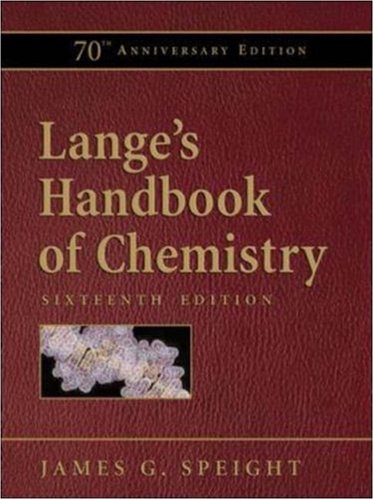
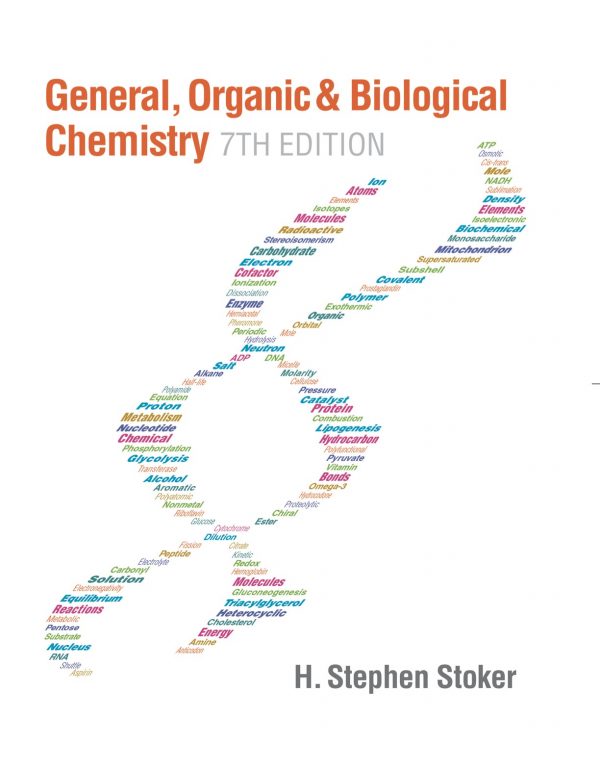
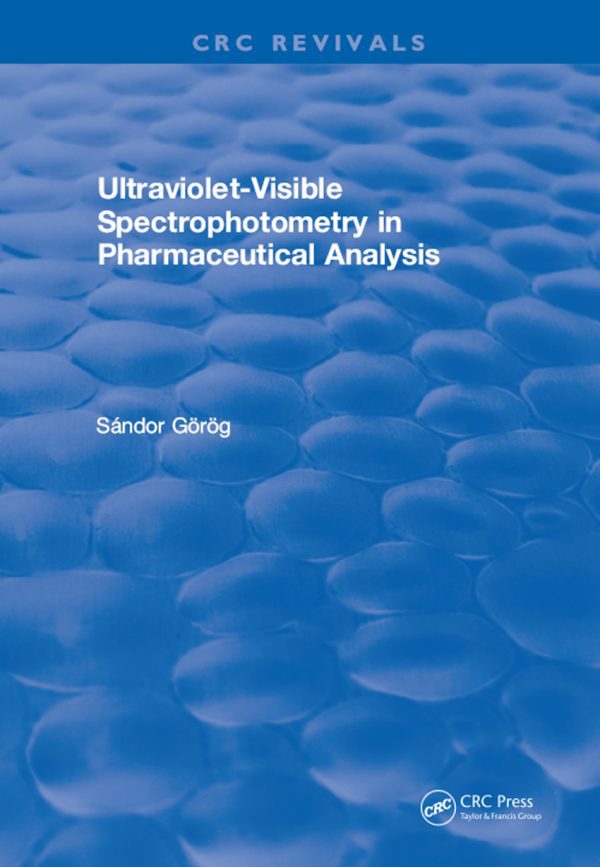
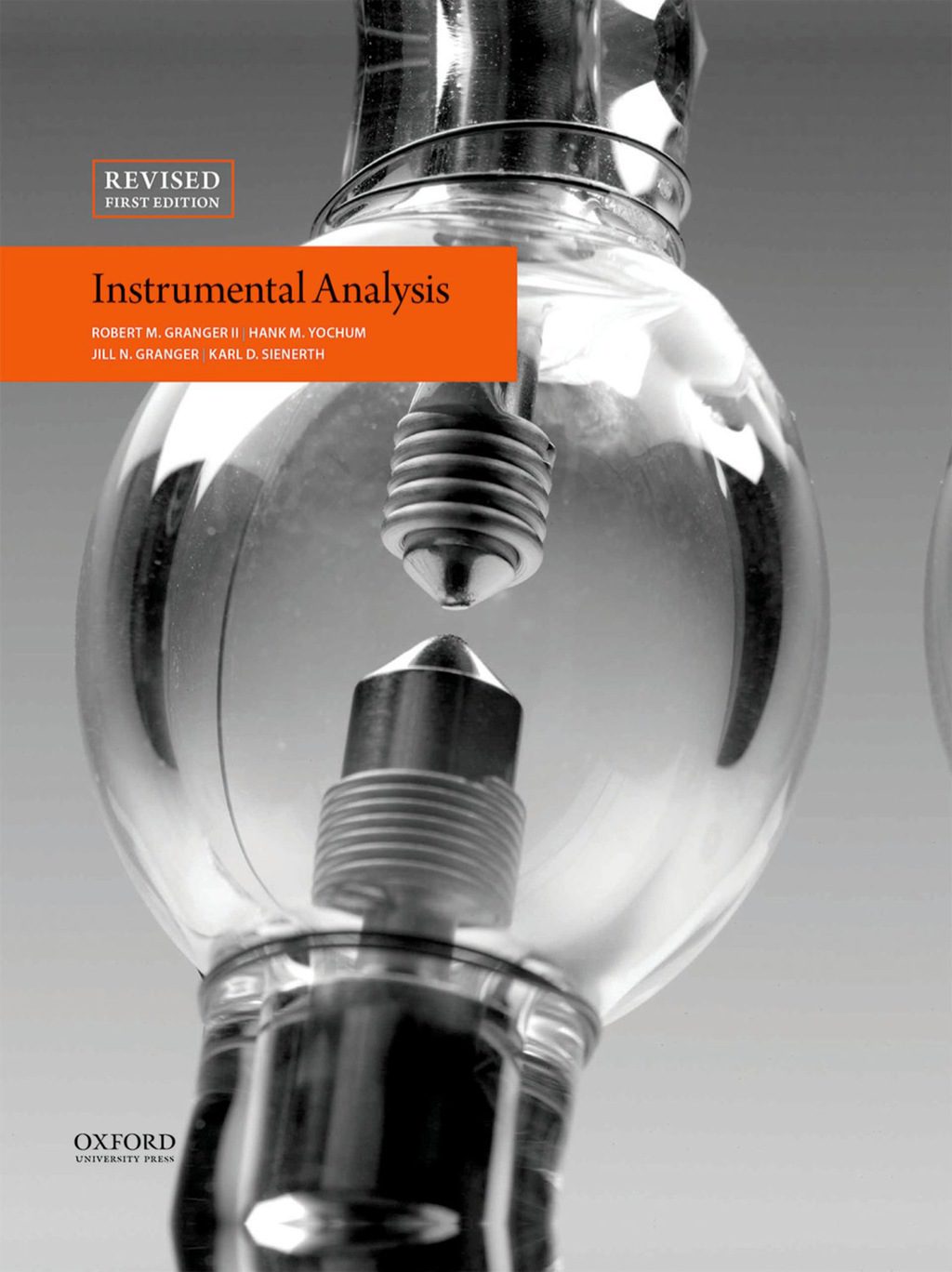
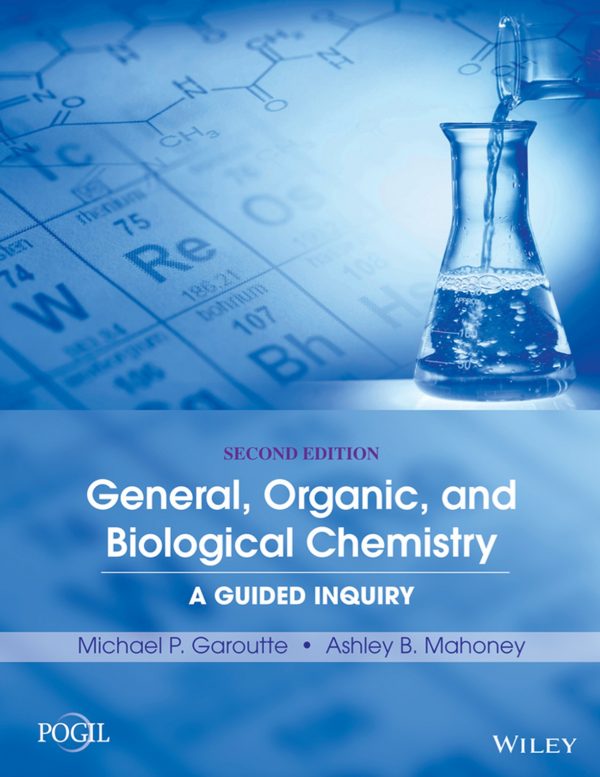
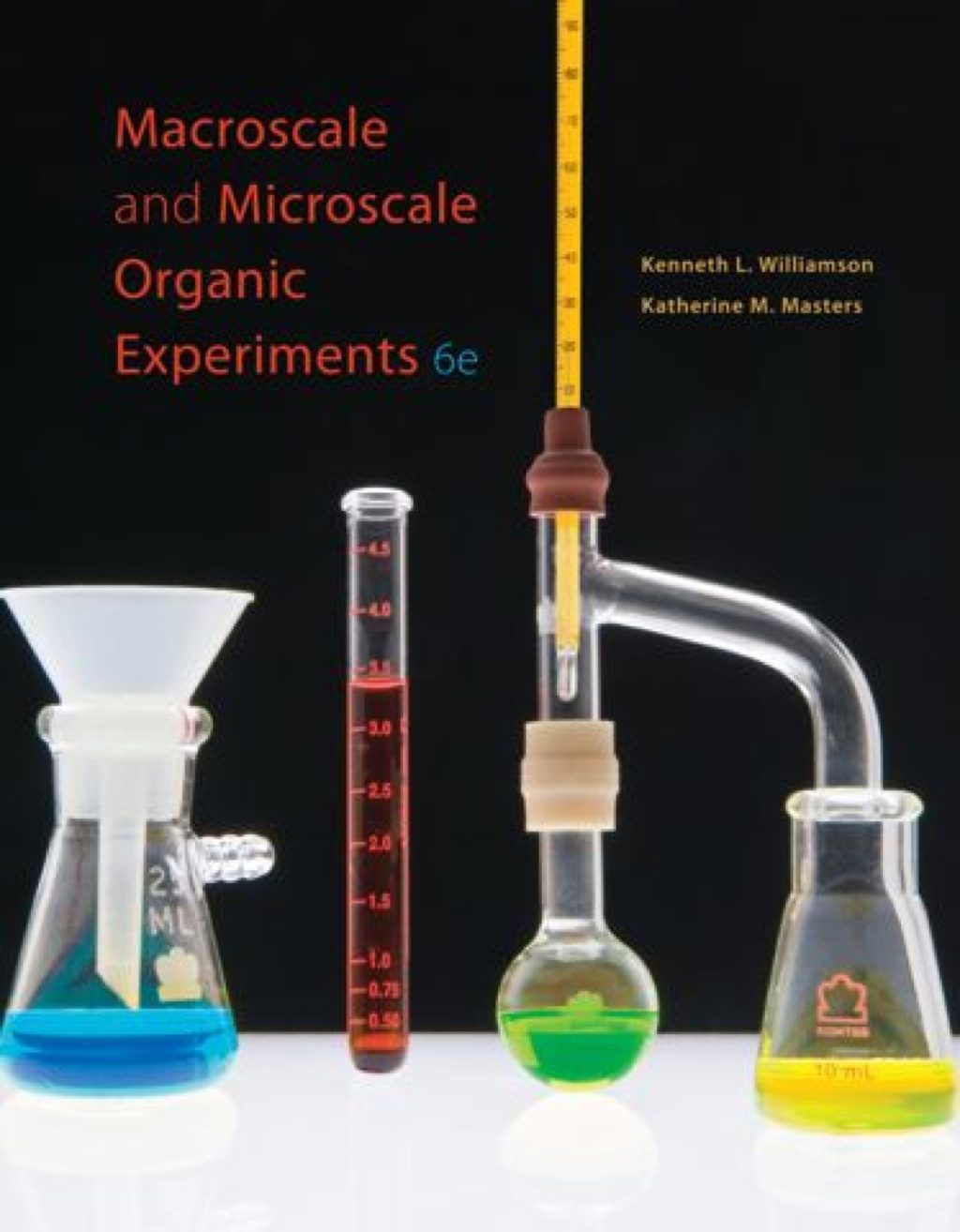

Reviews
There are no reviews yet.